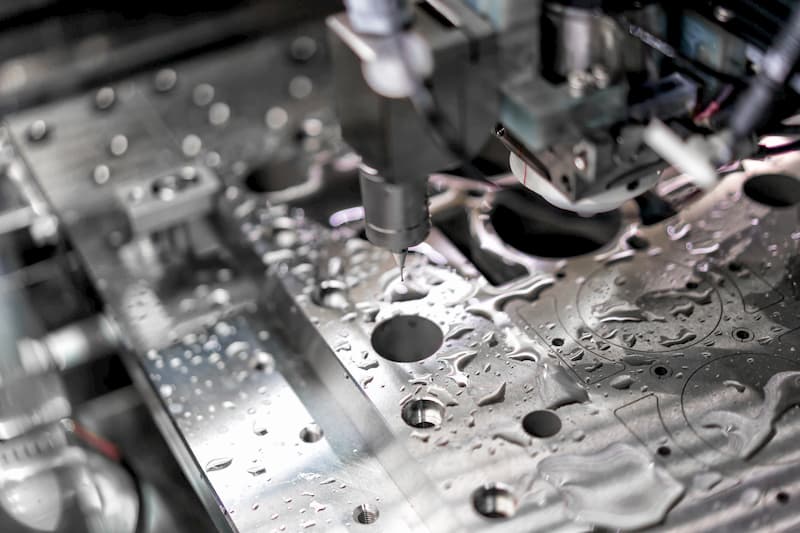CNC machining entails both milling and turning. Spinning parts and tools may seem dangerous and they actually are, if not careful enough.
But is the job of a CNC machine operator dangerous?
Machining Hazards
Firstly, machining operations may emit quite a bit of dust and smoke. The dust includes metal particles that may harm the respiratory system – a serious concern if operators fail to recognise air-quality risks early enough. Of course, proper ventilation is a must but again, these smaller workshops that only use the machines for a few one-off parts from time to time may not be equipped sufficiently.
Modern systems also use a coolant that catches most of the particles. The constant flow makes sure that only a few smaller bits can escape it.
The second hazard is just sharp objects. These can be the parts themselves or cutter ejections flying at high speed. Handling a workpiece that is not quite ready yet may have a lot of sharp corners still, so one has to be careful.
Thirdly, there are some problems that are not directly related to the process but rather to the CNC machine shop itself. One of the primary concerns revolves around slipping and falling.
Strict guidelines apply to the working spaces regarding the minimum distance between machines, signage, required footwear, etc. Also, all electrical components must undergo regular checks for problems, as anything out of the ordinary may pose a threat.
Lastly, fire suppression equipment should be available to any individual CNC machine. Some of the coolants may actually include highly flammable liquids that may catch fire due to the high speeds, resulting in elevated temperatures. Fire risk with CNC machines is actually a serious problem, as you can see from the linked article.
- Personal account manager
- Quality assurance
- Payment terms for companies
- On-time delivery by Fractory
Manual Machining Hazards
Manual machining still has a place in the manufacturing industry. Smaller workshops see these machines as a cheap alternative to more modern technology. A skilful operator can still get beautiful results with manual machining, though.
But these machines are also more dangerous to use.
The main concern revolves around spinning parts and tools. Getting caught in the machinery is easy to happen when not always aware of the surroundings.
While many think this is rather a beginner’s mistake, the opposite is true. Seasoned veterans may grow too comfortable and confident around machinery which results in lowering awareness levels. Once this happens, an accident is much more likely to happen.
CNC Machining Dangers
CNC machines automate the work of CNC milling and turning services. This means that the machine operator is not always hands-on, as the computer guides the movement of tools, parts, etc. as per the digital instructions.
Therefore, a whole lot of hazard is quickly eliminated. Still, a few sharp bits and pieces may fly, so safety is still the top priority. While CNC turning and milling have a few distinct differences, they both pose similar threats.
But these machines are safe enough that engineering students often use them in teaching classes, just to see how the machinery works. This includes setting up and everything.
Even though direct injuries occur less often with automated systems, dust from the operations can still affect the operator over long-term exposure.
Conclusion
CNC machining itself is not something to be afraid of. A well-schooled operator knows his way around the machinery and how to minimise the risks while performing CNC milling, for example.
At the same time, it is important to always keep a cool head and avoid falling into a comfort zone, as this is the real cause of a large part of the accidents around workshops.



